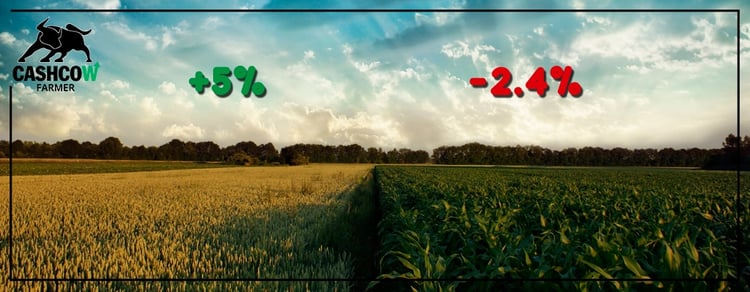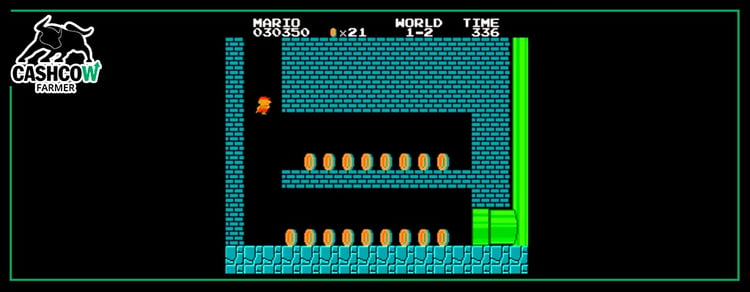Don't have time to read, click play above or subscribe to our podcast on itunes.
It feels like video games back in the day were always hiding something.
In all those classic 2-D games (e.g., Super Mario and Donkey Kong) there were secret parts of the “level” that led to treasure, goods, or new places—if you knew where to look. The good stuff was all right there, under your nose, but you wouldn’t find it unless you were looking.
I think there’s a good lesson farmers can learn here. There are nuggets of profit hidden all over your operation, right now, that you can find if you know what to look for. Honestly, a few tweaks here and there can be the difference of tens of thousands of dollars for you annually.
Let me help you start looking by showing you six areas where your profit is hiding.
1) Interest rates savings
This one involves a little paperwork, but the money earned is worth it.
Farmers have operating lines of credit from which they borrow money during the planting stages. These lines of credit are usually taken with 4-5% interest rates. That means if a farmer borrows $1 million, he’ll pay $50,000 in interest costs.
Usually, the farmer won’t have all the grain sold at harvest; probably, he’ll sell half a million worth or less. The extra grain will sit in the bin and start incurring costs for next year.
In this case, the farmer can go to the FSA and take out a commodity loan. The interest rates for commodity loans are at about 1.375%. The farmer can use this loan to pay off his operating line and save 3% or more every month, cutting that $50,000 down to $20,000 annually.
This is one of the beautiful subsidies farmers get that they don't always take advantage of.
2) Field-by-field economics

This is where Cash Cow Farmer comes into play. It takes all operating expenses and divides them into categories by field, so the farmer can see the profitability of each field.
Cash Cow reveals those fields that are consistently "losing.” The good news is that you can make almost any field profitable. But first, you have to know each field’s profit and loss.
3) Planning efficiencies
Your harvest plan is based on the various maturity dates of the seeds you plant. If you plant and think about harvest at the same time, you can open your harvest window. That way, you won’t have soybeans that are too dry because you had planted all the same variety without regard for timing.
One thing I do: I plant shorter-day varieties right away and get into longer-day varieties as I get further on in the planting season. The shorter-days will be ready a week or two before the others, so my moisture stays where I want it. If I were to take soybeans out at 8% moisture instead of 12%, I’d be losing a couple of bushels just in the water weight.
Work with your seed advisor, because bad timing can be the difference in another $10,000. Make sure you’re planning while you're planting.
4) Water under the bridge
I know it’s hard, but try to let logistical decisions win out over emotional grudges.
Every farmer knows a neighbor who has a grudge against a local co-op. They were cheated, or felt they were, and the co-op never made it right. Maybe you are that neighbor.
I know plenty of farmers who will pass one or two buyers and drive up to 70 miles away in a semi-truck to sell grain. That's tremendously expensive. Their pride keeps them from burying the hatchet, at their own expense.
I don’t know about you, but there aren't a lot of buyers in my area. By refusing to use even one, I may double my transportation costs. So yes, I may have had a spat where I thought something unfair happened, but we talk it out and then—water under the bridge.

5) Neighborly love
Every farmer has a different setup. Some have a lot of machinery; some have a lot of storage.
You can work with your neighbors, possibly renting grain storage for half or two thirds what it would cost at the elevator. As an example, I marketed a lot of my crop this year and I've got about 300,000 bushels worth of storage. I'm going to use about 100,000, but I’ve got plenty of extra storage left.
So I called my neighbors and said, “The elevator's charging five cents a bushel. I've got storage I'm not going to use; what do you think is a reasonable charge?” We came up with three cents, giving them a 40% discount.
I also offered to let them use my air fans that can dry their grain down. At the elevator, the process would cost 5 cents on every bushel for each percentage point of drying. I offered to do it for four cents.
That's another $5,000-10,000 you can save, depending on your volume.
6) Negotiate, negotiate, negotiate
This is extremely important. If you can save 10 dollars a ton on fertilizer and a couple of dollars on chemical costs per gallon, that's going to add up.
There's always more competition when it comes to buying inputs, so talk to everybody and give them all a chance at your business. Find the lowest price, go back to your favorite input suppliers, and ask if they can match or beat that price. I save at least $50,000 a year by doing this.
For more on negotiating, I highly recommend reading Stuart Diamond’s Getting More.
Conclusion

There’s hidden profit nearly everywhere: I promise you that.
Another quick example is that right now corn prices on the futures exchange are having a hard time getting back to $4. But at the moment, next year’s corn prices are at $4.13.
It's distant, but you've got an opportunity to sell for over $4 next year. You can start to lock in stuff for next year, now.
That’s just one of the many ways you can greatly raise your profit by making simple, smart choices. If you don’t always take what the “level” gives you, you’ll find more—all over your operation.
Cash Cow Farmer was created to keep you from leaving a single dollar of profit on the table. Give it a look to learn more about how Cash Cow optimizes your operation!
To learn more about the Cash Cow Farmer program, including software and consulting, give us a ring!




